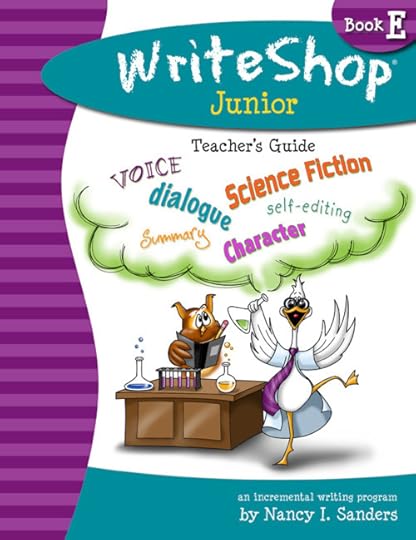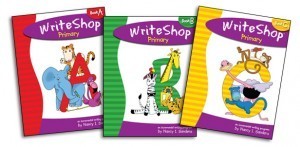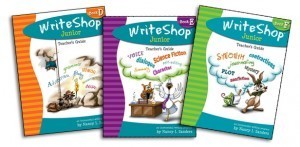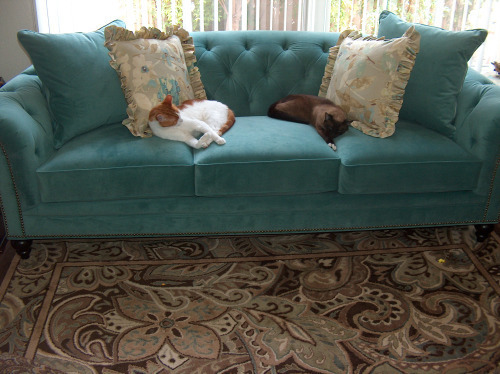Nancy I. Sanders's Blog, page 57
August 22, 2014
Welcome to My World!
Crunch. Crunch. Crunch.
What’s that sound? It is a mouse nibbling on cheese? Is it a monster eating a cookie? No, it’s me (and maybe you) in a time crunch trying to work as fast as I can to meet editorial deadlines on various writing projects.
This past summer I had some great and fabulous vacations. (I hope you did too!) On one vacation, my husband and I got together with my 5 other sisters and 1 brother and their spouses for a family reunion. (I’m the youngest of 7.)
Here we are, all in order from youngest to oldest, left to right:
(To see more of my fun family reunion photos, CLICK HERE.)
But suddenly it seems, all the editors in the entire world of publishing got back from THEIR vacations and decided to contact me! I’ve got a lo-o-o-ong TO-DO list of TOP PRIORITIES from everyone PLUS an exciting brand-new new unexpected deadline that’s also on a whirlwind time crunch.
So why am I telling you all this?
Because I’ve been mostly silent here on my blog the past month or so as I’ve been rearranging my schedule nearly every day to try to crunch out another editorial deadline (or two or three or four) that arrived in my e-mail inbox that morning.
But I’ve made a decision.
Instead of disappearing for the next two months while I keep crunching out these urgent commitments, I thought I’d invite you to follow along and take an inside peek at what goes on day-by-day…really goes on…as a writer juggles a bunch of different hats to wear.
It’s exciting! It’s scary! And it’s so much fun I thought I’d invite you along.
And if you want to share some of the fun stuff you’re doing in your corner of the writing world, let us know so we can cheer you on!


August 12, 2014
Grammar Jammer: Linking Verbs
LINKING VERBS
Some verbs link the subject with more information about it.
Linking verbs show a state of being.
Carrie Author is as happy as a kid at Christmas.
Yesterday, she was an unpublished author but soon that will be changing.
She has been eager to be published since she was in college.
Have You Heard?
Any form of the verb be is a linking verb:
am
is
are
was
were
has been
have been
am being
are being
will be
might have been
etc.
More Linking Verbs
Other verbs that show a state of being are also linking verbs.
look, feel, taste, smell, sound, seem, appear, become
Let’s Give Linking Verbs a Try!
Use a pencil to circle the linking verbs.
Carrie Author is a member of an online picture book critique group.
She has been part of that group for three years.
This is her very first book contract. She feels so excited!


July 30, 2014
Grammar Jammer: Let’s Talk Verbs
How’s your grammar? Want to brush up on your grammar skills? Then join me here on my blog from time to time as I post tips and techniques on grammar.
Let’s Talk Verbs
Verbs are words that show action or a state of being.
ACTION VERBS
Most verbs show action.
Carrie Author ripped open the SASE.
She read the editor’s letter.
Have You Heard?
Some sentences have two or more verbs.
The publisher offered her a picture book contract and promised a $40,000 advance!
Carrie screamed and jumped up and down.
Have You Heard?
The tense of a verb shows when an action happens.
Past tense shows an action happening in the past.
Present tense shows an action happening right now.
Future tense shows an action happening in the future.
Let’s Give Action Verbs a Try!
Unscramble these action verbs and fill in the blanks.
Carrie _______________ (ENOPHD) her husband with the news.
She _______________ (EXETTD) her friends and _______________ (DEEWETT) on Twitter.
She _______________ (CANDDE) around for joy.


July 16, 2014
Announcing the Release of WriteShop Book E!
The Writing Curriculum for homeschooling families that I wrote (and amazing publisher Kim Kautzer edited) has recently hit the shelves and is already up and running marathons in the homeschooling community!!!!
I know many of you are homeschooling mamas and papas so I thought you’d be eager to hear the news…there’s still plenty of time to order your copy of WriteShop to teach writing to your young writers in grades K-6 this next year.
You can check out this awesome BOOK E review at DELIGHTFUL LEARNING
And for more info about the WriteShop curriculum I wrote as an incremental writing program to get kids in the know and loving’ writing (just like YOU do), look at these other products available for you to implement in your child’s life:
Check out some of these awesome reviews!
BOOK A review at MUNCHKIN AND BEAN.
BOOK B review at EVERY BED OF ROSES
BOOK C review at PONDERINGS FROM MY HEART
BOOK D review at THE MOMMY JOURNAL


July 8, 2014
Teleclass Writing Workshop
Do you need help learning how to “show, don’t tell”?
Then sign up for this tele class that I’ll be teaching, complete with a handout of “50 WAYS TO SHOW, DON’T TELL.”
You can join me live this week on Thursday, 2:00 Pacific Standard Time, or you can pay now and download the audio later when you have time to listen to it.
For years, I struggled with this elusive rule. How does a writer show instead of tell?
But as I’ve worked with various editors on several new books of mine that have been going through the publication process this past year, I saw exactly what editors were doing to my manuscripts to change places I “told” my reader what was happening to be passages that “show” it instead.
So join me for this tele class and learn simple yet effective techniques to take your writing to the next level!
CLICK HERE for the link to register for the tele class.


July 7, 2014
Local Writing Workshop
About a month ago, I bought a milkweed plant and it had a baby caterpillar on it. It was fun to watch the caterpillar grow and change into a pupa. Yesterday it emerged and we released it in our garden.
As writers, it’s important for us to keep on growing as we improve our writing skills. Along the way, we metamorphosize and turn into successful, published writers. And still we keep on growing!!!!
With this in mind, I want to invite you to come join me at a free local writing workshop I’ll be teaching this week!
For any of you who live near Rancho Cucamonga, come on out and join the fun at the Rancho Writers, a writer’s group that meets each month.
Here’s where you’ll find us:
Date: Wednesday, July 9, 2014
Time: 2:30-5:00
Place: Room One at Northkirk Presbyterian Church
9101 19th St
Alta Loma, CA
909-989-4919
Cost: Meeting is free and open to the public
Of course, I’ll be there to answer questions you may have about writing, and I’ll be selling some of my books after the event, but here’s what I’ll specifically be teaching about:
* The Rule of Three and how using it can help you develop stronger characters.
* Exercises to help you develop stronger voices for your characters.
* Tips and techniques on being a Piggyback Writer so you can break into print and get your manuscripts published.
* How to “Show, Don’t Tell.”
I hope to see you there!


July 4, 2014
Happy Birthday, America!
June 26, 2014
Self-Editing Tips: Show, Don’t Tell
The fourth and final item on our self-editing checklist under the category of Creative Nonfiction Techniques is to make sure we remember to “show, don’t tell” by using key anecdotes to replace narrative.
There is a delicate balance to the amount of narrative and anecdotal writing we incorporate into our writing…especially because we are writing for kids. Too much narrative and our story will be boring and will sound like an encyclopedia entry rather than a story. Too many anecdotes and our manuscript will burst the seams with too high of a word count and could even be classified as overwritten.
If you’ve ever had your work critiqued and gotten feedback to “show, don’t tell” you may know it’s one of those weak areas of yours that you need to work on.
But what exactly does this mean?
Basically, it means to create a scene, even a short scene, that incorporates elements such as dialogue and action, so that the reader can see what’s happening in 3-D technicolor instead of just being told that it happened.
If you have trouble doing this, then I’d like to invite you to join me on July 10 at 2:00 when I’m teaching a tele class at the Working Writer’s Club on “Show, Don’t Tell.”
More information coming soon on how to sign up and join!


June 24, 2014
Self-Editing Tips: The Three Act Structure
As we’re working through our Nonfiction Picture Book Self-Editing Checklist to edit the nonfiction picture book we just wrote, let’s take a minute and double check the structure of our manuscript.
Did you incorporate the Three-Act Structure into your manuscript so that the story is paced effectively?
If you’re not quite sure what I’m talking about, check out this post on my blog here.
Here are some key points to consider:
1) Does your manuscript have 3 significant changes that separate the beginning from the middle from the end and also show the turning point of the whole story? If not, how can you incorporate these changes to make your plot structure even stronger?
2) Does each significant change get bigger and bigger so that the tension is building? If not, how can you up the ante each time and give your MC a bigger mountain to climb on his quest?


June 20, 2014
Self-Editing Tips: Sensory Details
As we’re working our way through the NONFICTION PICTURE BOOK SELF-EDITING CHECKLIST (available by CLICKING HERE) We’re talking about checking our manuscripts for the use of “Creative Nonfiction Techniques.”
We can make our story 3-D by adding sensory details.
Sight: What does our character see?
Smell: What does she smell each time she walks into a certain room?
Touch: What does she feel brush across the back of her neck or poke her in the ribs? Hear: What does she hear going on in the background of the scene?
Taste: What yummy treat does she eat at the circus?
When I write, I write in layers. Meaning that first I just need to get the story that is in my brain and in my heart out on paper.
Then I go back in and plug in important things like sensory details.
I just go through and find several key spots (in a picture book) where I can plug in a sensory detail–in space this tight with limited word count–hopefully in just a word, a phrase, or a short sentence.
Go back through and check your manuscript for sensory details. It will really make your story come alive!
And if you’re not sure how to plug in sensory details, just look at your mentor text(s). Read through them and see how they plugged in the sights, sounds, and smells of that topic.


Nancy I. Sanders's Blog
- Nancy I. Sanders's profile
- 76 followers











